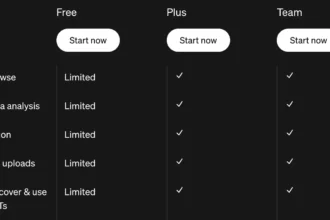What is a Large Language Model (LLM)?
So, you’re interested in knowing if an LLM is an algorithm. Let’s dive into it! A Large Language Model (LLM) is actually a deep learning algorithm designed for various natural language processing (NLP) tasks. These models, leveraging transformer models and vast datasets, possess the capability to understand, translate, predict, or generate text and other forms of content.
Did you know that LLMs are often referred to as neural networks? While they serve the purpose of teaching AI applications human languages, they can also be trained for diverse tasks such as comprehending protein structures and writing software code. Similar to the human brain, these models undergo pre-training followed by fine-tuning to excel in solving text-related challenges like classification and summarization.
Now, let’s unravel how LLMs work by discussing their training and fine-tuning phases. During training, LLMs learn from extensive textual datasets through unsupervised learning processes where they acquire word meanings and contextual relationships. Subsequently, through fine-tuning specific tasks like translation or sentiment analysis become more achievable.
Moreover, large language models have varied use cases ranging from information retrieval to chatbots and conversational AI in sectors like tech, healthcare, customer service, marketing, legal practices, banking services – basically everywhere you can think of!
To give you a glimpse of some popular LLM examples for reference: Google’s PaLM for common-sense reasoning & translation; BERT for question answering; XLNet for random order token prediction; OpenAI’s GPT series for generative text capabilities.
As large language models advance rapidly overseeing many potential future advancements in NLP technologies including automation improvements albeit raising ethical conundrums regarding workforce displacement in certain sectors. Excited about delving deeper into the world of Large Language Models? Great! Let’s explore more details on key components and workings tied with these fascinating systems next…
Table of Contents
ToggleIs an LLM an Algorithm in Machine Learning and AI?
Yes, an LLM (Large Language Model) is considered an algorithm within the realm of Machine Learning and Artificial Intelligence. These models are rooted in machine learning, a subset of AI that involves training programs to recognize patterns and features within data without explicit human instructions. LLMs specifically utilize deep learning, a type of machine learning where models can self-train to identify intricate distinctions autonomously, although some level of human fine-tuning is often necessary.
Understanding the significance of LLMs for businesses in various industries is crucial due to the expanding role of AI technology. As businesses embrace AI tools like LLMs and machine learning algorithms to streamline operations and enhance efficiency, it’s vital to focus on simplicity, consistency, problem identification, historical data analysis, and accuracy. The impact of machine learning on businesses is evident through improved efficiency, effectiveness, customer experience, and overall evolution towards innovative solutions.
In essence, an LLM functions as a computer program capable of interpreting complex data including human languages. These models are typically trained on vast datasets collected from sources like the internet. The quality of training data significantly influences an LLM’s language comprehension abilities; hence curated datasets are sometimes preferred for better performance. Powered by deep learning techniques such as probabilistic analysis of unstructured data, LLMs excel in understanding the intricate relationships between characters, words, and sentences without direct human intervention.
Applications and Examples of Large Language Models (LLMs)
Large Language Models (LLMs) represent state-of-the-art artificial intelligence algorithms designed to process and comprehend human languages using neural network techniques and self-supervised learning. These models play a crucial role in various applications such as text generation, machine translation, summary writing, image generation from texts, machine coding, chatbots, and conversational AI. Popular examples of LLMs include Chat GPT by OpenAI and BERT by Google.
When it comes to applications of Large Language Models (LLMs), their versatility shines through in different industries. For instance, in healthcare, LLMs can assist in medical record analysis or automated report generation. In marketing, they can enhance personalized content creation and customer interactions. In legal practices, LLMs can aid in contract analysis or legal document summarization. In the financial sector, these models find utility in fraud detection and risk assessment through processing large volumes of text data efficiently.
Large Language Models have also revolutionized the world of customer service with virtual assistants that can understand user queries more effectively using natural language processing capabilities. The use of LLMs has enabled businesses to automate repetitive tasks while improving response times and accuracy in handling customer inquiries.
Moreover, the educational sector has benefited from Large Language Models by utilizing them for automated essay scoring systems or providing personalized study materials tailored to individual student needs. These models facilitate enhanced learning experiences by offering immediate feedback and support based on students’ responses.
In conclusion, Large Language Models are powerful AI algorithms that have transformed various industries by streamlining operations, enhancing efficiency, and improving decision-making processes through their advanced language processing capabilities. Their widespread adoption signifies a shift towards innovative solutions driven by artificial intelligence technologies.
- A Large Language Model (LLM) is a deep learning algorithm designed for natural language processing tasks.
- LLMs leverage transformer models and vast datasets to understand, translate, predict, or generate text and other content.
- LLMs are often referred to as neural networks and can be trained for tasks beyond language processing.
- LLMs undergo pre-training and fine-tuning phases to excel in text-related challenges like classification and summarization.
- LLMs have diverse use cases in sectors like tech, healthcare, customer service, marketing, legal practices, and banking services.
- Popular LLM examples include Google’s PaLM, BERT, XLNet, and OpenAI’s GPT series for various NLP tasks.




